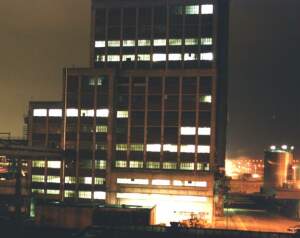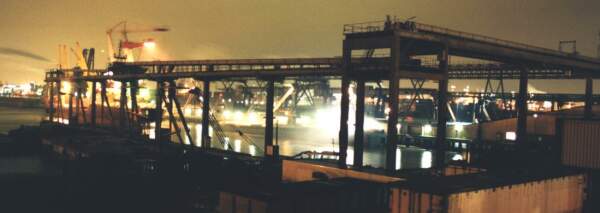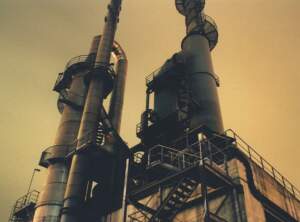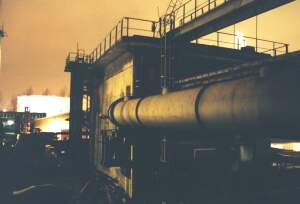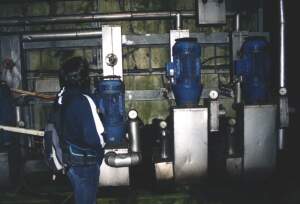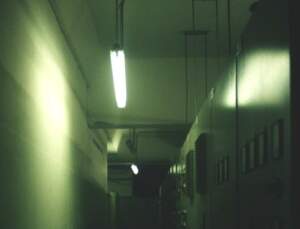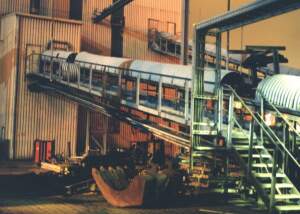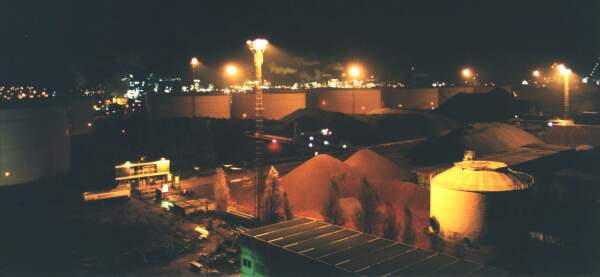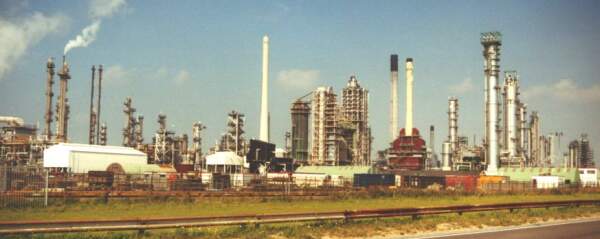 |
Setting off - We met at Ben's
place in Delfshaven. Egons - from Latvia - was
staying at Ben's place for a few days and he
would come and explore with us. (Egons: left,
Ben: right) We decided to visit the "mystery factory", the grain-loading dock and - time permitting - the Botlek-tunnel of the Betuwe-lijn. The tunnel is finished, but no trains go through it yet. |
 |
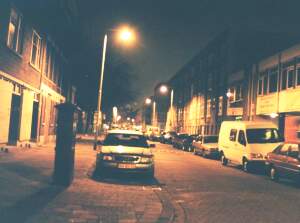 |
| I also admired
the place where Ben lives. They're demolishing
all the houses around him and soon he'll have to
move. In the meantime it's one of the better
romantic spots in Rotterdam. |
But it's not one
of the best neighborhoods. The infamous Keilerweg
(drugs and prostitution) is just over the
(deserted) rail tracks. Ben lives behind the
first door on the left. |
 |
Discovery - We discovered
the "mystery factory" during our
"new camera trial expo". We went into
the harbor and looked for things to photograph,
so I could get used to my new Minolta. We came upon this pipework, and it had a big sign saying that it was being demolished. We took some photographs, and admired the barbed-wire fence. We decided it would be climbable, but it was within full view of the busy Botlekweg. |
 |
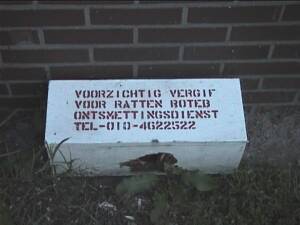 |
| First
expedition - It was this kind of
fence. Later we discovered that we could
walk around the fence. |
But we found no
immediate entrance, just this old box of rat
poison. |
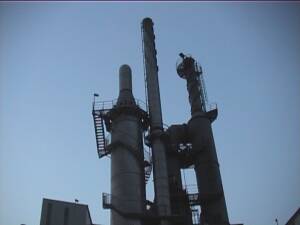 |
Steel chimneys
and stairs rising to a breathtaking height. We
simply had to get inside, one way or another. Not being able to get in over the side fence we walked to the back. Here we saw a featureless 2m high concrete fence. We would need a ladder. I hung around here, filming all the heavy machinery while Ben took a closer look at the fence. Then I lost him ... he was gone a long time. |
 |
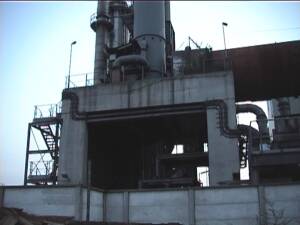 |
| We still have no
idea what was done in this factory. My guess -
but that is not supported by any fact - is that
it recycled road-surface - asphalt. |
In the beginning
everything was still accessible. Notice the
stairs on the left. It was possible to go all the
way to the top of the chimney. |
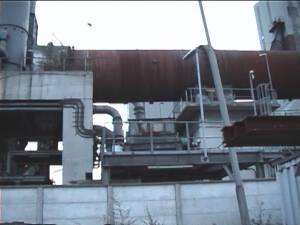 |
 |
| This is what
gave me the "asphalt" idea. Something
is put into this pipe on the right. The
horizontal pipe looks like it could rotate on
it's axis. Gravity would transport the fragments
to the other side of the pipe at the left. Note: recently I got a nice email explaining this in more detail. |
And of course
the smell of polycyclic cancer causing carbonates
that pervaded the site. Then Ben called me on my mobile phone and disturbed my speculation ... "I've found a hole in the fence here!" |

